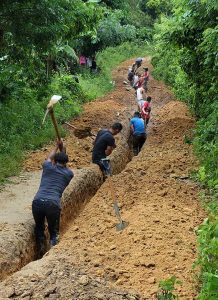Thirty-five years of sister-city relationships in Boulder County strengthen our international ties
01 Sep 2019
Sisterly Love
By Sara Bruskin The most famous sister-city partnership in our area is undoubtedly the one Boulder shares with Dushanbe, Tajikistan. Locals and tourists alike treasure the Boulder Dushanbe Teahouse for its stunning craftsmanship and the cross-cultural friendship it represents. Few people, however, know that Boulder has a whopping 10 sister cities, and Longmont has two of its own. In 1956, President Dwight D. Eisenhower founded the Sister Cities International program, intending to foster people-to-people diplomacy. The organization’s stated mission is “to promote peace through mutual respect, understanding and cooperation—one individual, one community at a time.”
Boulder’s Sister Cities Jalapa, Nicaragua Lhasa, Tibet/China Dushanbe, Tajikistan Yamagata, Japan Ciudad Mante, Mexico Yateras, Cuba Kisumu, Kenya Nablus, Palestine Kathmandu, Nepal Ramat HaNegev, Israel Longmont’s Sister Cities Chino, Japan Ciudad Guzmán, Mexico
Visit www.bouldercolorado.gov/sister-cities or www.longmontsistercities.com to learn more about these programs. Donations and volunteers are always needed.












